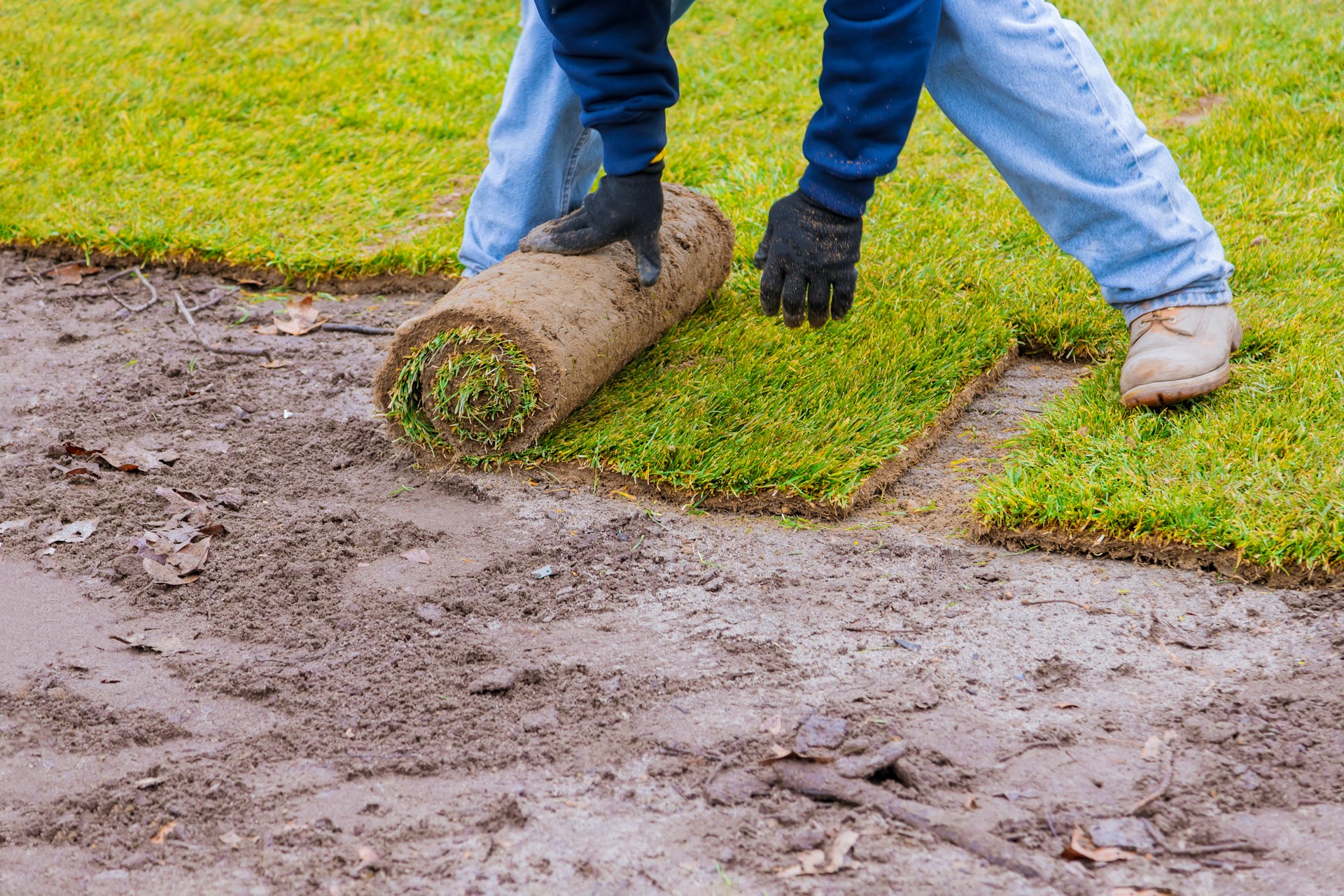
Soil compaction after laying new sod can mess up everything real quick. Roots can’t grow deep, water won’t soak in right, and soon that nice green lawn gonna look dull. If you just paid to install Bermuda grass, Zoysia sod, or St. Augustine grass, you don’t want the yard ruined ’cause the soil underneath got packed tight. Let’s break this down so you don’t get stuck later fixing a dead lawn.
Why Soil Compaction Happens in the First Place
When you or landscapers step all over the fresh sod, even without meaning to, that pressure squeezes the dirt. That’s what they mean when they say “compacted.” Not just walking though — tools, rollers, or even too much water can do it. Especially on clay-heavy soils, it gets bad fast.
Some homeowners think if it’s flat, it’s good. Nope. Flat don’t mean healthy. If air can’t move in soil, roots can’t breathe. Sod like Fescue hates compact ground. It may sprout, but won’t last long. You might see puddles sitting for hours too — that’s a red flag.
The other thing is heavy rains right after installation. That water weight pushes things down hard, especially when topsoil was thin. That’s why proper prep matters before laying anything.
Let It Rest — Don’t Walk on New Sod Right Away
First few weeks are make-or-break. If you just had sod installed, don’t go walkin’ on it like it’s been there for months. You ain’t giving roots time to settle. That’s the number one mistake people make.
Wait at least 2–3 weeks. During that time, keep kids, dogs, lawn chairs, anything off. Even the best Zoysia sod can’t handle early stress. Once roots start latching on, you can walk on it a bit, but still be cautious.
You should also avoid mowing it right away. A mower, even the lightweight push ones, puts pressure down. Cutting too soon also pulls on sod that hasn’t gripped into the soil. That can lift corners and damage growth.
Core Aeration Helps Loosen Soil Later On
Once sod is rooted — maybe 6 to 8 weeks later — it’s time to think about aerating the lawn. That means poking holes into the soil so water, air, and nutrients can reach down deep. That’s especially helpful if you’re in Texas clay or Georgia red dirt.
Use a core aerator, not a spike one. Spikes push dirt sideways, making it worse sometimes. Core ones actually pull soil plugs up, which is what you want. You can rent ’em or pay a lawn service to do it for you.
Don’t aerate too soon, or you’ll rip the sod right out the ground. Timing it wrong is worse than not doing it at all. Also, try to aerate before applying fertilizer — that way nutrients go deep. Aeration’s also good before overseeding, especially if you’re adding Fescue grass in fall.
Watering the Right Way Keeps Soil Fluffy
Overwatering can make soil mushy, then dry hard. That’s a compaction nightmare. You gotta find that sweet spot. Water deep but not daily. Two to three times a week’s enough once sod takes root.
Early mornings is better. Watering at night makes it soggy too long, and fungus loves that. Keep your sprinkler system set for early runs, around 5–6 AM. Try not to walk over wet sod either — your footprints leave dents, especially if you got clay soil under there.
If you notice water running off instead of soaking in, you might already got compaction. Use a screwdriver to test — if it barely goes in the soil, that’s compact. Healthy soil should let it slide down a good 4–6 inches easy.
Mulch Edges & Keep Equipment Off the Lawn
Keep mower, blower, carts, and stuff off the same paths. Constant pressure in one spot’s gonna make that area hard-packed real fast. If you’re storing stuff on lawn edges, stop. That’s not what sod is for.
Around trees or flower beds, use mulch to shield the border. That stops folks from walking too close and compacting the edges. Also helps with moisture control, especially in sunny yards with St. Augustine sod.
Make sure your yard crew (if you got one) ain’t rolling wheelbarrows across the lawn every week. Even one guy dragging a hose wrong can mash up a corner that never grows back right. Put pavers or stepping stones in places folks walk often.
Use Organic Matter to Keep Soil Structure Good
When soil got no fluff to it, it ain’t gonna breathe. Organic matter’s the fix for that. Compost, worm castings, aged manure — they all help with soil tilth. That’s just a fancy word for how loose and crumbly dirt is.
You don’t gotta dump a truckload. Even topdressing with a thin layer of compost every spring and fall makes a difference. Do it after aeration for best results. That stuff filters down into holes and builds the soil up over time.
If you just laid sod, wait a bit — 2 or 3 months before trying this. Let roots do their thing first. Then come in and feed the soil slow. Healthy soil holds water better too, which means your sprinkler system doesn’t have to run as long.
Final Tips So Your Sod Doesn’t Sink Over Time
Rotate mowing directions every week. Mowing the same line over and over puts pressure in one area. Mix it up — diagonal one week, up/down next week. It’s a small thing but helps.
Keep heavy furniture off the lawn. If you’re having a party, maybe lay plywood down for chairs and tables. One night’s damage can undo weeks of good growth. You won’t notice right away, but bare spots show up months later.
Lastly, check your yard’s drainage. If water’s pooling in certain areas, compact soil is already happening. Might need to install a French drain, regrade, or fix sprinkler zones that oversaturate parts of the sod.